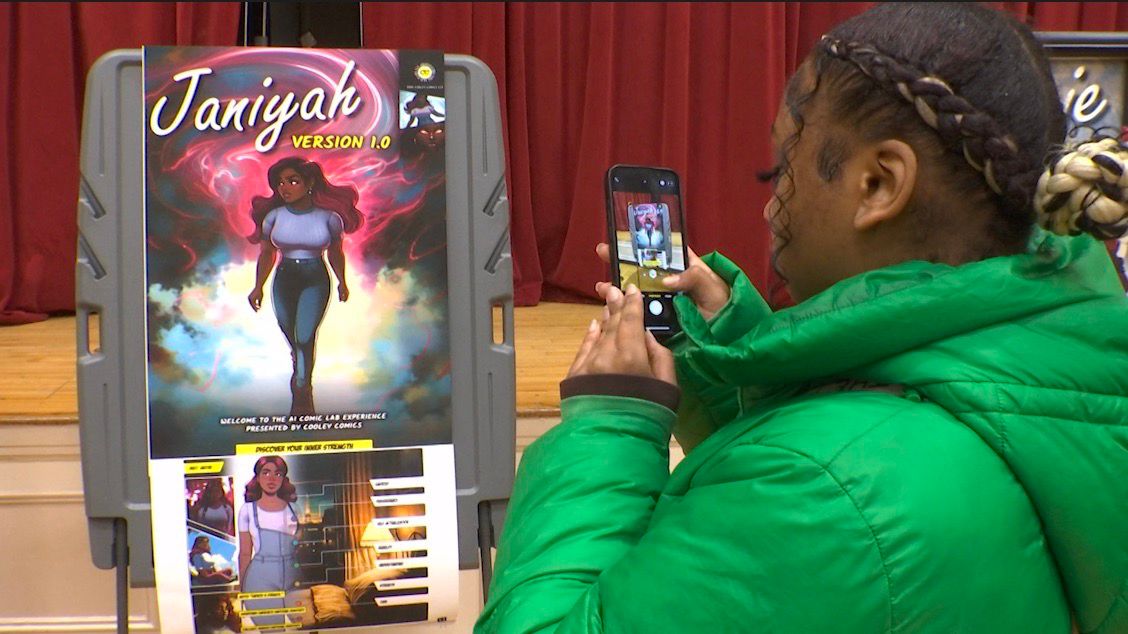ROCHESTER, N.Y. — Four or five words at a time, they retell a giant’s story.
Most are journal entries from mini-legal pads, meticulously numbered and dated; they’re buff paper stock dulled by a century in hiding.
One has the scribblings of a sportsman so convinced football would work as a “major league” business, he gave his prime to seeing it happen, on the field and off.
Leo Lyons sketched the U.S. crest on the Olympic jersey of Jim Thorpe, the multi-sport legend widely considered the greatest athlete of the first half of the 20th century. The shield, with its blue field and stars, only needed a football and the letters NFL. It is a dead ringer for what we know as the league’s logo today.
Those notes have become the latest parts of a jigsaw puzzle for John Steffenhagen, a mystery that's lasted most of the Rochester-area postal worker’s life.
Steffenhagen’s puzzle has, for a generation, involved stuff that looks like it came from a garage sale. It was the last of the memorabilia that Lyons, John's great-grandfather, kept from his days building a pro football league.
Steffenhagen always saw his great-grandfather as a Depression-era businessman. Only after his mother handed him boxes of “Leo’s things” did John, as a teen, learn that Lyons was there in a Canton, Ohio, car showroom when the NFL came to be.
"I remember going to school and I was like 'look, this is a picture of my great grandfather with Vince Lombardi,' " said Steffenhagen. “They said, 'that's not Vince Lombardi. That's not your great-grandfather.' I'd say, 'no, it really is.'"
Leo Lyons played pro ball for the Rochester Jeffersons in the early 20th century. He later owned and coached the Jeffs. In 1920, he got the call on candlestick telephone that John has amid his collection from none other than the legendary Jim Thorpe enlisting him to join Chicago’s George Halas, among others, to form what we know today as the NFL.
John thought most of the stuff he had was simply his grandfather’s materials, linked to days when he played before the NFL in the New York Professional Football League and hadn't connected his boxes of family heirlooms to pro football history — until one day earlier this spring.
While moving the boxes of Lyons' keepsakes into his new house, faded old papers fell from a 1966 Hall of Fame game program. It turned out to be gold. Among the papers: a letter from then-NFL Commissioner Pete Rozelle asking for an inventory of those keepsakes that Leo had kept and a one-sheet checklist of his memorabilia.
As he read through what he realized was Leo’s journal, John discovered other historic facts that are blowing away sports historians.
"Many of the things correlated with the things that I had," Steffenhagen said.
There’s the matter of an old, dried-up football John had long believed was one Leo used during his days in the 1910s. From the inventory, John learned the ball was used during the Halas-led Chicago Staleys' first game in Cubs Park (today’s Wrigley Field) against the Rochester Jeffersons in 1921.
After checking, John learned that ball is the oldest remaining NFL game ball known to be in existence. Steffenhagen checked it with the Wilson Sporting Goods company, which confirmed its use during the ‘21 season.
“I thought it was just a ball," he said. "It means a lot more than that now."
Then there’s a century-old leather box, a knick-knack that sat on so many family shelves and end tables. From the inventory list, John learned it was a box used by NFL owners to collect money from paying customers at the earliest NFL fans. Leo had saved the box, with its GBP engraving, because it was given to him by Curly Lambeau during a 1925 game against the Jeffs.
“It just sat around for years,” Steffenhagen said. “And how it didn't get thrown away was a miracle."
A muddy old pair of cleats, still with nails holding the rubber nubs into the shoes’ soles, may be the most valuable single piece of the collection. Again, John believed them to be his great-grandfather’s. But a further review of the inventory list confirmed they were worn during pro football contests by the game’s first black star player, Henry McDonald.
McDonald played for the Jeffersons with, and for Lyons, in the 1910s. Nicknamed “Motorcycle” for his great speed, he was a feared weapon for Rochester who ran up against resistance because of his race. Eventual Hall of Famer “Greasy” Neale once threw him into a bench after a tackle during a Jeffs game against Canton. Lyons, who was also a friend of McDonald’s, stuck up for him. Only after Thorpe defused tensions did the two parties part ways.
While Lyons’ inventory reported the cleats’ owner, Steffenhagen needed more proof. He and his wife, using a blue light, inspected the shoes and eventually found McDonald’s initials scratched into the inside of the cleats.
NFL legend Bo Jackson has been among others to inquire about the availability of the cleats after Steffenhagen reported the discovery on social media.
“These are incredible artifacts of one of the first black football stars. And now we know he wore these shoes,” Steffenhagen said.
But it is Leo's journal that changes and fleshes out NFL history.
The details have even moved the Chicago Bears to contact Steffenhagen, after the documents detailed something of which the franchise was not aware.
Chicago's team records mark the team’s name changing from the Staleys to the Bears at the start of the 1922 season (the franchise was born south of Chicago in Decatur, Ill.). Lyons' notes indicate his friend, George Halas, told him in the fall of 1921 that his team would change names from the Staleys to the Bears, after having relocated to Cubs Field.
“Their historian believes what’s in Leo’s notes, because in the journal, Leo has the address of Halas’ private property, where they’d meet when he was in the area,” Steffenhagen said. “The place is in the hills way outside Chicago. When the historian saw the address he said, 'no one knows about that address. What you have must be authentic.’ ”
This gives credence to Leo’s journal entry of how he and New York Giants owner Tim Mara nearly landed Red Grange, pro football’s first superstar, before Halas. Lyons wrote how he and Mara conspired to sign Grange before Chicago.
"And there's a $5,000 check from Leo that he had with him when he visited New York with the Jeffs,” Steffenhagen said. “That was a lot of money then.”
And whether it's a stopwatch that served as a game clock in the NFL's early days or a century-old medical kit, complete with ointments and bandages, John believes he’s sitting on sports history gold.
The Pro Football Hall of Fame wants to see it. John will oblige. But what will he do with it? Keep it in storage? Sell it for appraisals that could be millions? Or put it on public display?
The Smithsonian expressed interest in parts of the collection. John’s presented to the NFL before when the materials first re-emerged. What he wants least is for the memorabilia to remain packed away from the public.
But what he wants most is his great grandfather recognized as a founder. Lyons, who went on to run businesses, including a paint operation after his football days, has been a part of pivotal NFL moments. He helped bring about the HFL Hall of Fame in the early 60s. He was there when it opened in 1963 and was mentioned by Halas as “Papa Bear” was inducted in the Hall’s first class.
“What this is all about is Leo. He was a founder. He believed in what he called 'major league' football when it was a regional sport,” Steffenhagen said. “I don’t know as if I want to sell all these things to the highest bidder. It would feel like selling out family. In the end, it’s about Leo Lyons, his contributions. His team didn’t last in the NFL, but he did.”









